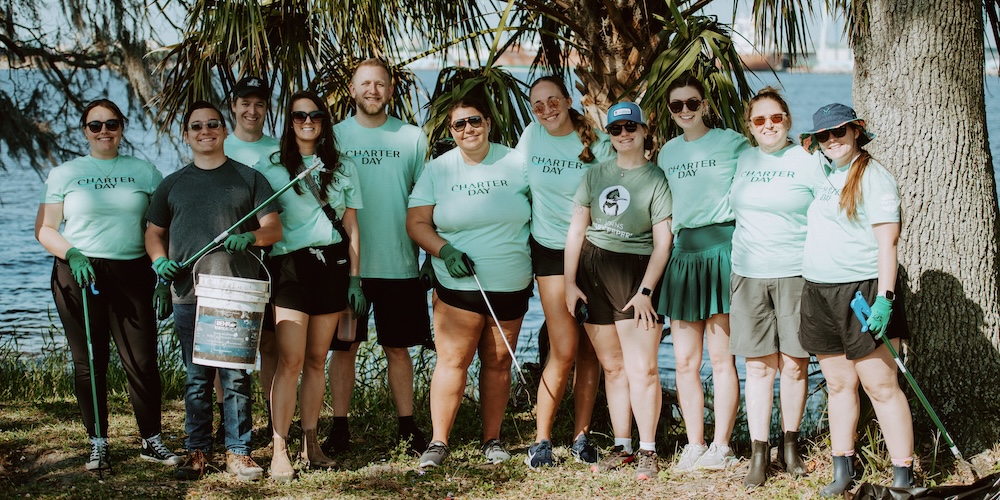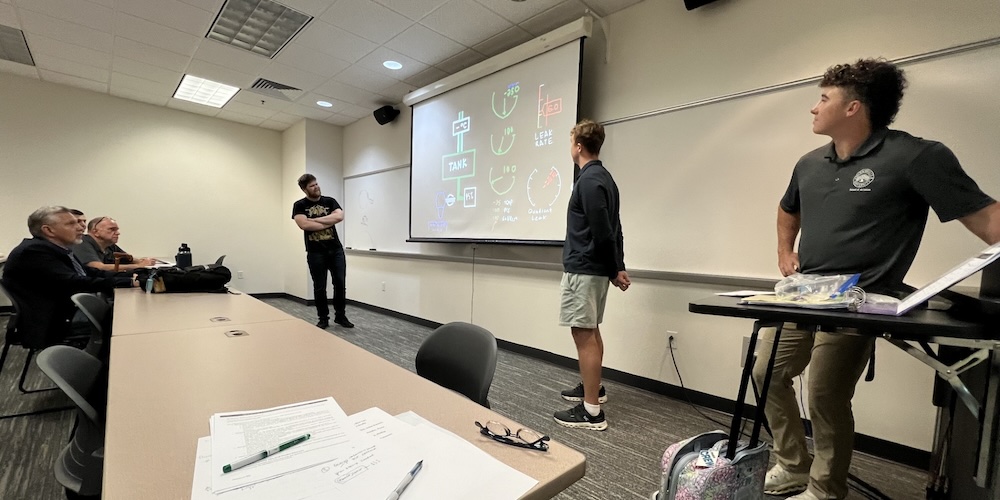The hope of the planet, most say, lies in the hands of those younger than us; upcoming generations aware of the environmental challenges who respond with empathy, ingenuity, and critical thought; and invent resilient alternatives so that humans maintain a thriving, comfortable society that is harmonious with our ecological world. Whew. No pressure.
Because of its magnitude, many science educators insist it is important to start small when communicating about environmental action. This can look like planting a tree, composting, eating vegetarian, using eco-friendly sunscreen—or teaching children about how the animals, plants, and people that make up their “backyard” work together. For those whose home is in Northeast Florida, the St. Johns River is our backyard. So what’s in it?
Rebecca Lewis is a current marine science and illustration student who can answer that question.
This past year, she wrote and illustrated a children’s coloring book, Life on the St. Johns River, as part of Jacksonville University’s river education partnership with JAXPORT known as Connected.
Lewis was first intrigued by marine life as a child when her aunt shared photos and stories about her scuba diving expeditions worldwide. Captivated by the images and eager to learn more about the ocean, Lewis spent her recesses at school devouring marine science books, watching NOVA documentaries, and drawing her discoveries. She carried these passions from grade school into college.
The coloring book project was facilitated by marine science professor Dr. Melinda Simmons and illustration professor Nicholas McNally, who saw it as an opportunity for Lewis to gain experience as a scientific illustrator and fulfill her undergraduate research requirement for the Honors program. Lewis is an excellent scholar, serving as a peer tutor and supplemental instructor at the Academic Support Center, and is an active member of the Green Key Honor Society, Rho Rho Rho, ECOSOS, and the Honors program. This project was not the first time she illustrated for marine science, either. Earlier last year Lewis designed the Marine Science Research Institute’s annual Pioneer Award logo for renowned geophysicist and explorer Dr. Marcia McNutt.
“Illustration, when done well, can communicate on more than one level at once. Rebecca pushes the art form to its limits. On the most direct level, scientific illustration must be accurate. Rebecca’s drawing skills and knowledge of aquatic life allow her to accurately depict the world that lives below the surface of the St. John’s river,” said Prof. McNally. “Going to a deeper level, Rebecca uses illustration as a subtle call to action. She wisely avoids moralizing, instead, depicting a scene in which people and animals live harmoniously together - with us doing our part to keep the river clean and the animals safe.”
Lewis researched and illustrated various marine organisms that inhabit the St. Johns River, including fish, birds, crabs, and dolphins. She also included familiar human-centric images, such as cranes from JAXPORT and the MSRI’s Larkin pontoon boat. Lewis wanted the coloring book to be both educational and engaging for children, showcasing the shared ecosystem of the river by humans and other living creatures.
“It was really important to make the visuals both as true to reality as possible, yet still add a creative flare to pull people into wanting coloring the pictures. You can draw a fish on the page, but the real question lies in how can I make that fish look more dynamic and guide the eye to the other interesting images on the page?” said Lewis. “It was a challenge that required going back to the drawing board many times, and playing with different angles and shapes to get the illustrations to where they felt right. Luckily, I had amazing and very helpful mentors to guide me during this process.”
Lewis regularly met with Professor McNally to discuss the book’s composition; how to dynamically illustrate pages that engage children while accurately conveying the distinct attributes of the River’s flora and fauna. Dr. Simmons provided guidance on what to include such as various animal species and anthropogenic developments. Rebecca also collaborated with a representative from Florida Fish and Wildlife at the MSRI, who gave additional insight into the local marine life and their habitats.
“The Jacksonville community needs more sustainable resources to support environmental education. I attend meetings where people use "swag" to engage passersby and often those items are plastic trinkets that get tossed in the garbage,” said Simmons. “I thought a coloring book would be something engaging and educational that could be given out without creating plastic pollution. I have had the joy of being Rebecca's professor and academic advisor since her freshman year and knew she would be perfect for this challenge.”
The coloring book will be distributed to local schools and educational programs to raise awareness about the St. Johns River and its diverse ecosystem, and used at Jacksonville University’s Marine Science Summer Camp.
While Lewis determines her career path in the upcoming years, torn between scientific illustrator and field researcher, she thanks her parents for the opportunity they’ve given her to follow her passion.
“Of course, the ideal goal is to get a job doing what I love so that I can enjoy work and raise more intrigue for the ocean, but more personal than that is my hope that I can repay my parents for everything they've done for me. I’ve been so grateful for their support as I’ve tried to figure out what exactly I wanted to do with marine science and my art these past three years,” said Lewis. “I've gone back and forth between pursuing a more research-focused path or the scientific illustration path...and to be perfectly honest, I'm still unsure. However, my parents aren't pushing me to make a specific choice and support me exploring what I feel is right for me. No matter what path I choose, I know that they will support me and that is the biggest kindness I could ever wish for.”
Lewis plans to pursue another marine science illustration project in her upcoming senior year, applying her childhood ambitions and talents to a world in need.


